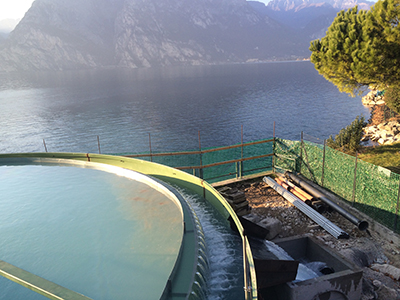Water reuse – sometimes referred to as water recycling – is an innovative and dynamic strategy that can dramatically change the future of water availability in the United States. Water reuse can be used to meet water demands and mitigate the risks posed by droughts.

Additionally, recycled water can be used for a wide variety of applications, including agriculture, potable water supplies, groundwater replenishment, industrial processes and environmental restoration. Further developments in water reuse provide more secure, sustainable and safe water supplies across the country.
At the virtual 35th Annual WateReuse Symposium, the U.S. Environmental Protection Agency (EPA) facilitated a “charrette” to identify challenges and map solutions to continue advancing the National Water Reuse Action Plan (WRAP).
While EPA and its partners across the water user community have made expeditious and meaningful progress under the WRAP, the charette lays the groundwork to accelerate this progress and help ensure the security, sustainability and resilience of our nation’s water resources – today and for future generations.
“Water reuse must be a central theme in EPA’s efforts to meet 21st century demands for water,” said EPA Assistant Administrator for Water David Ross. “While we are extremely proud of the progress made, the WRAP was designed as a living plan where EPA and its partners can build momentum from successes to continue diversifying our nation’s water portfolio while supporting our water economy for generations to come.”
During a live interactive session on envisioning the future of water reuse, Assistant Administrator Ross delivered remarks that outlined a vision for reuse where communities, agriculture and businesses in both water-scarce and water-rich regions increasingly turn to reuse to diversify their supply portfolios for current and future needs.
The panel discussion considered reuse through the lens of a water-scarce community, a water-abundant community, and an industrial customer. It featured New York City Department of Environmental Protection Senior Policy Advisor to the Bureau of Sustainability Dr. David Lipsky; Austin Water Systems Planning Engineer Katherine Jashinski; and Coca-Cola North America Supply Chain Water/Wastewater Technology Manager Paul Bowen.
Additionally, during the symposium, WateReuse President Gilbert Trejo presented the association’s 2020 President’s Award to EPA’s WRAP team for facilitating the collaborative development of the Water Reuse Action Plan, released earlier this year. The WRAP identifies 37 specific actions led by a spectrum of federal, state, local and other water sector interests to improve the security, sustainability and resilience of our nation’s water resources.
“Our nation is blessed with abundant access to safe and reliable water sources throughout our country. However, as our country and economy continues to expand, we must ensure that this reliability continues for future generations. I am pleased the administration has taken a forward-looking approach to include federal, state and tribal agencies, along with a multitude of diverse stakeholders, to put out the WRAP. It is an example of the good that comes when government and the private sector work together to lay out practical suggestions to steward our natural resources well,” said Congressman Bruce Westerman (R-Ark.)
“Finding new ways to preserve and protect water in Oklahoma is one of our top priorities as a state. Today’s release of the ‘Water Reuse Action Plan’ shows that the federal government is serious about leading in its mission to assist all 50 states as well as sovereign tribal nations in developing valuable resources out of previously worthless water. These goals cannot happen without the full partnership of states, tribes, local governments and our federal partners across all agencies working together,” said Oklahoma Secretary of Energy & Environment Ken Wagner.
“The U.S. Department of State is excited to use the WRAP as a tool to raise awareness about water reuse around the world. By encouraging partner governments to adopt water re-use policies, management approaches, and new technologies – many of which were made here in America – the State Department is helping to implement the president’s Global Water Strategy. And, through our outreach efforts, all of the people and agencies who contributed to the WRAP are also helping to make other nations more water-secure,” said Principal Deputy Assistant Secretary of State for Oceans and International Environmental and Scientific Affairs Marcia Bernicat.
